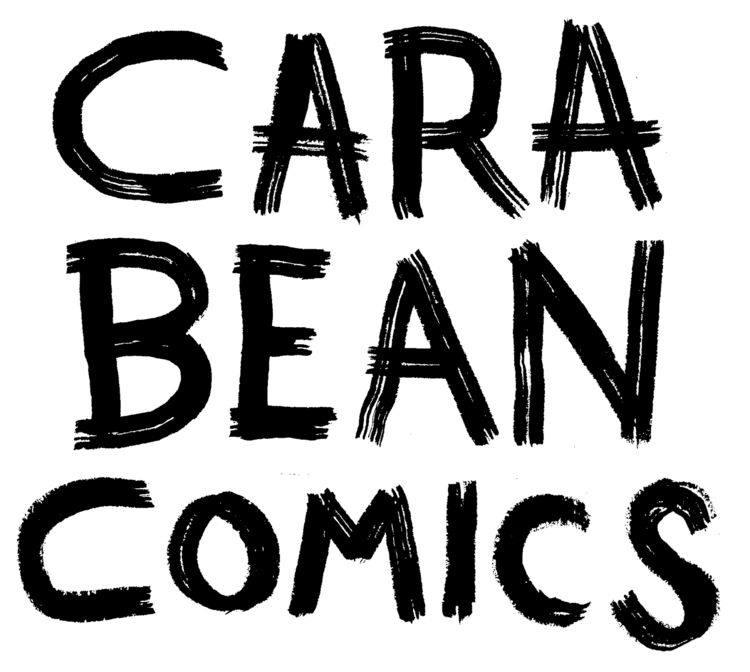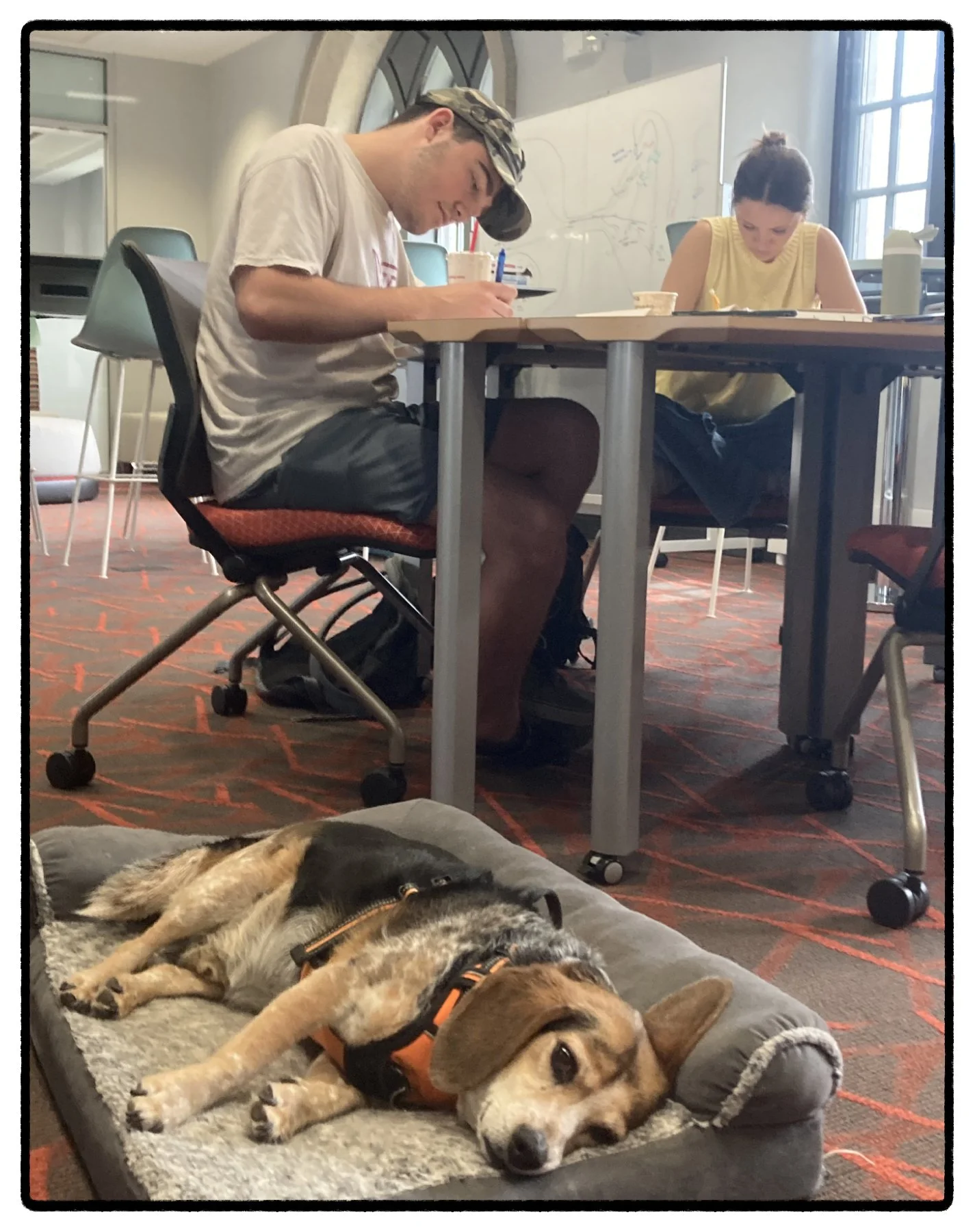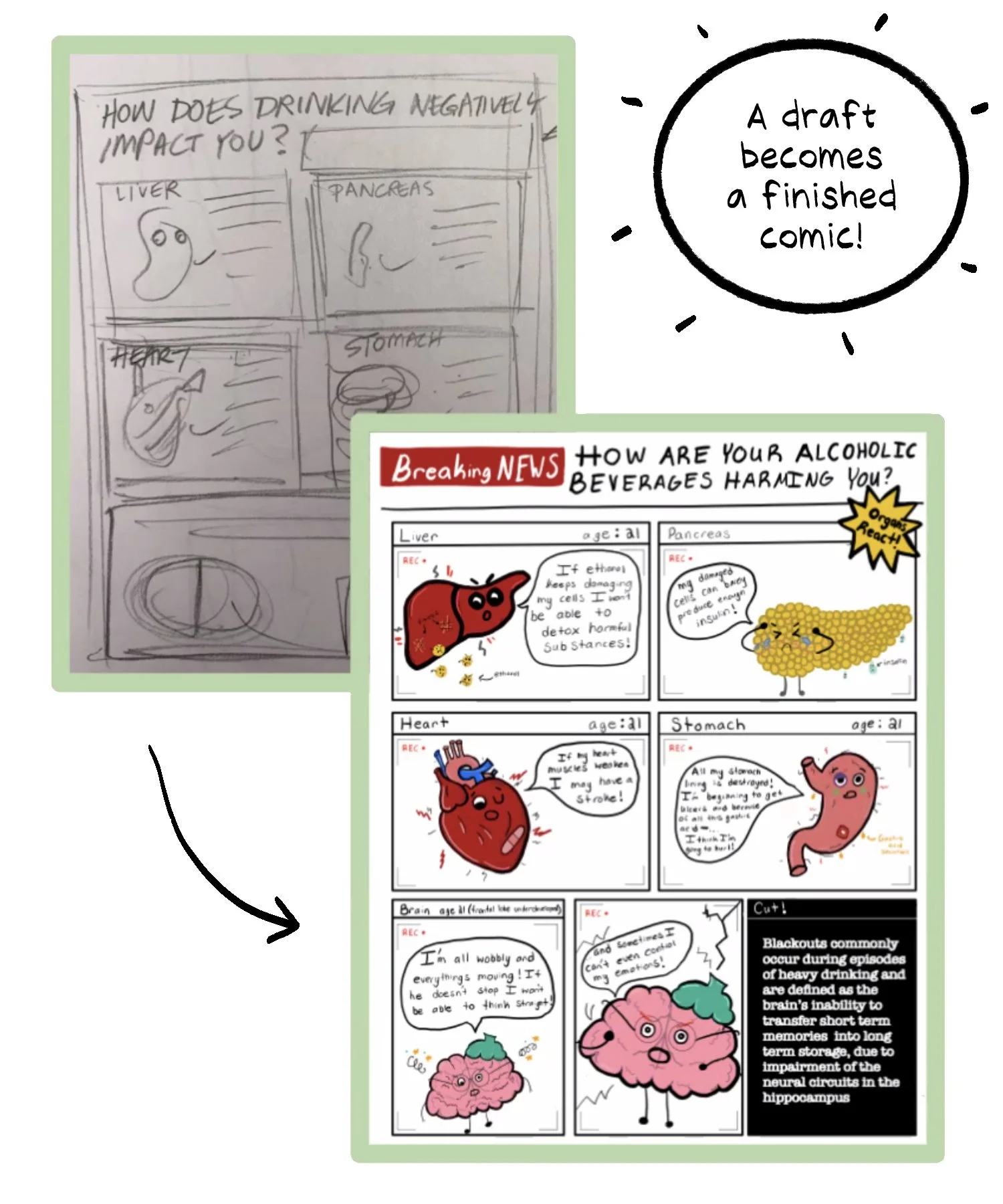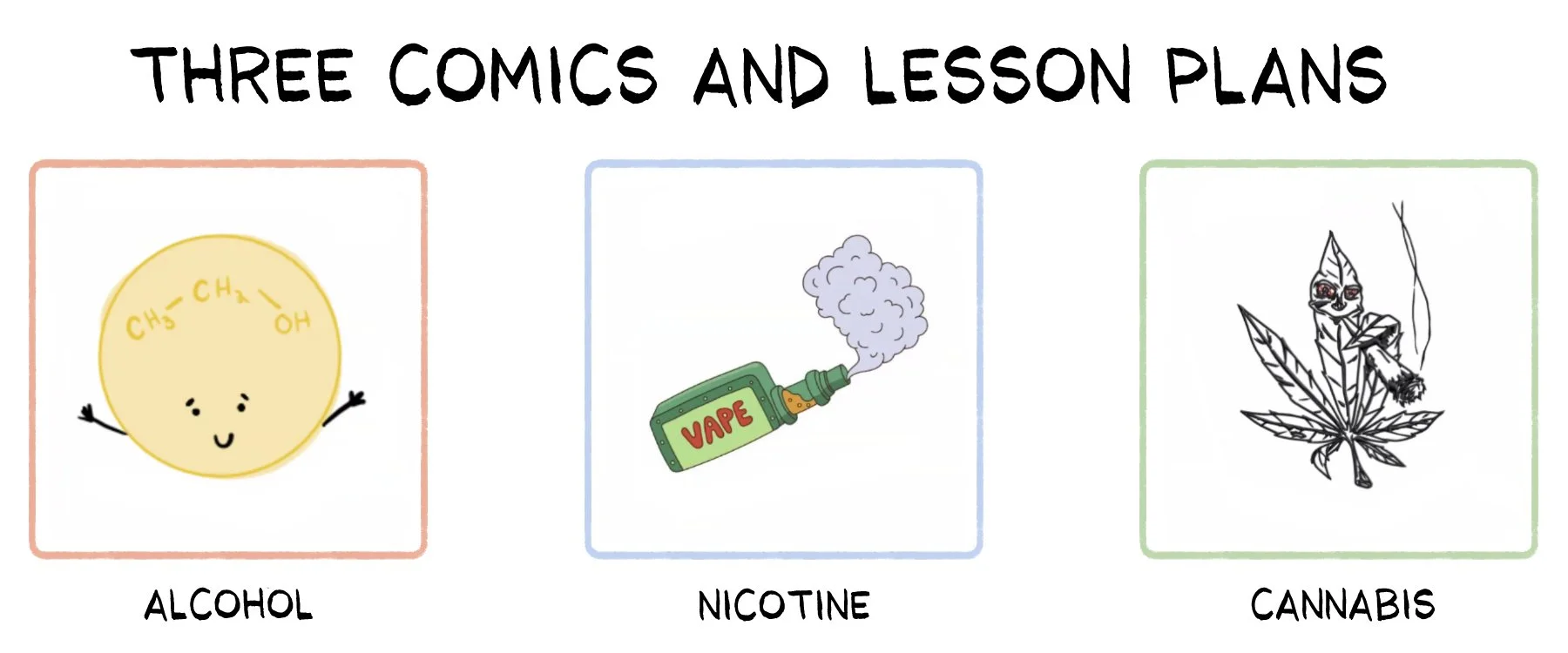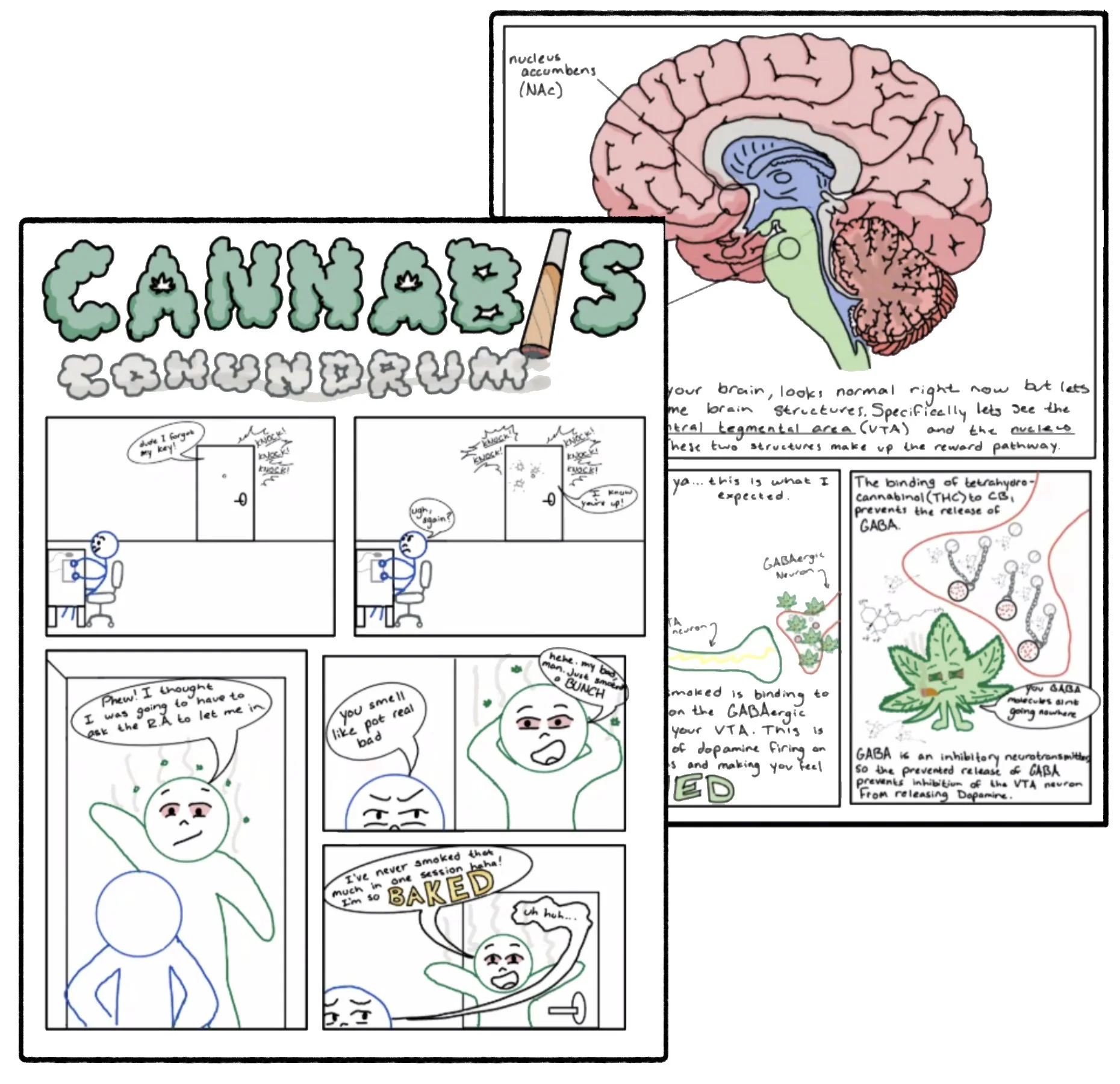Science Comics Lab, Neurosceince of Drug Addiction Class, School of Neuroscience, at Virginia Tech University with Professor Aparna Shah, Ph.D, Ziggy the dog, and cartoonist Cara Bean.
Did you know that you can invite me to be a guest instructor at a higher ed institution? I love coming in This year I was proud to have played a part of Dr. Aparna Shah’s Neuroscience of Drug Addiction Class which was taught as a Community-Engaged Learning course.
I attended several sessions over Zoom and visited for a full-day comics intensive with students on March 29th, 2025.
Cara Bean points to comics information and prompts on a dry erase board as students take notes.
Students work on comics while Ziggy naps.
PROJECTS:
Alcohol (by Lyann & Rachel)
This comic creatively reviews basic neuroscience concepts in terms of effects on receptors and different organs of the body as well as the qualitative effects on one’s quality of life and provides a possible path to recovery following addiction.
Nicotine (by Lyann)
This comic explores the most basic neuroscience of vaping that a middle schooler would understand and goes more over the brain areas and circuitry than a molecular level and warns about the addictive qualities of nicotine, especially modern-day vapes.
Cannabis (by Jack)
This comic playfully describes how marijuana works and what can happen if you use it too frequently. It delves into cannabis-induced psychosis and gives an example of what that can look like.
The Booze Blues and What’s Going On In the Body
Vaping is Bad for You
Cannabis Conundrum
STUDENT CHALLENGES:
Research
-It was difficult to find reliable information about each topic and make sure we were simplifying it well enough for anyone to understand while still being factual with everything and tailoring it to the comic
Art Block
-getting motivation to draw or do drafts was very hard.
-art block is no joke!
-I would know what I wanted to draw but every time I tried to put it down, it wouldn’t look the way I wanted it to.
-it was a challenge to think of ways to make the comic entertaining while also being informative
Knowing what information to include
-It is difficult to determine what information to include to accommodate age groups while still being thorough enough to get the point across
-There is a wealth of information on the internet about drug mechanisms and it’s difficult to know what to include. Not just in terms of complexity and detail, but in terms of subject
TAKEAWAYS:
What did the neuroscience students gain from this experience?
-Insight into making nueroscience more accessible
-Experience with substance use disorder awareness
What were the lessons learned from making a comic?
-Drawing is HARD
-Storyboarding can takes very long time
What were the benefits of participating in this overall project?
-Tangible practice in creating science literature.
-Inspired for future goals like writing and illustrating a book!
